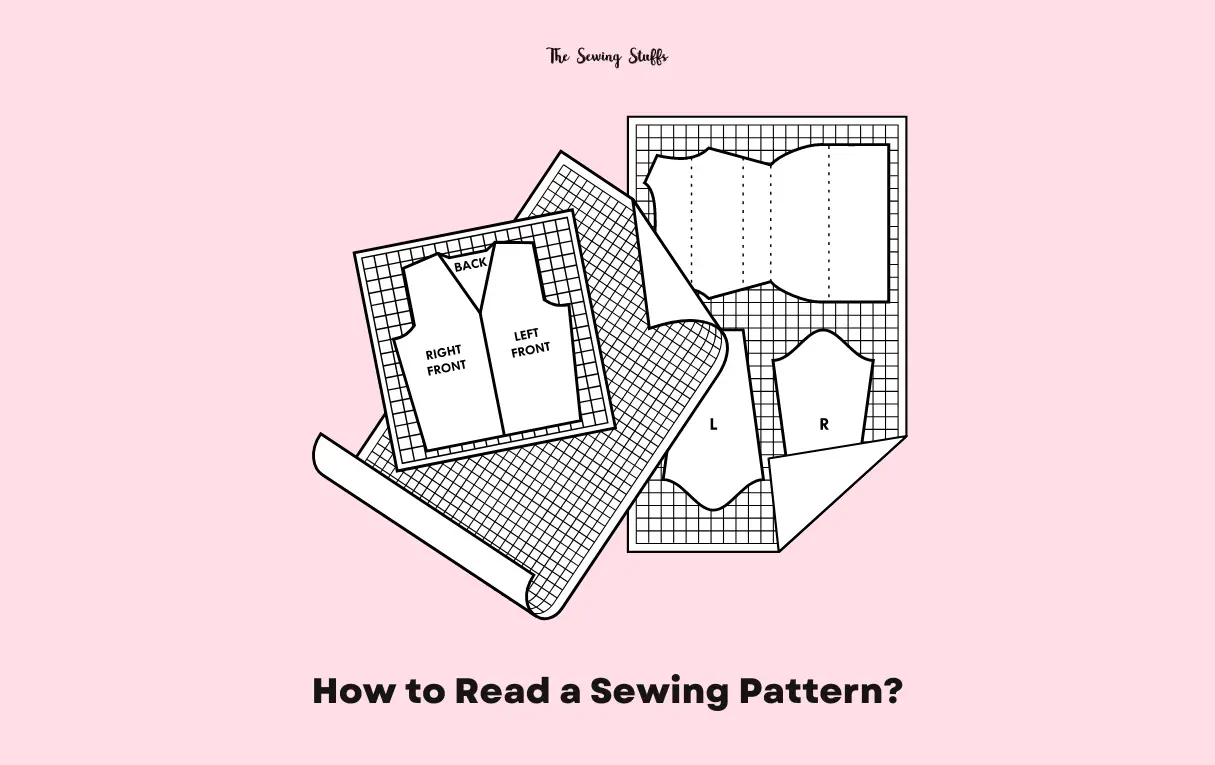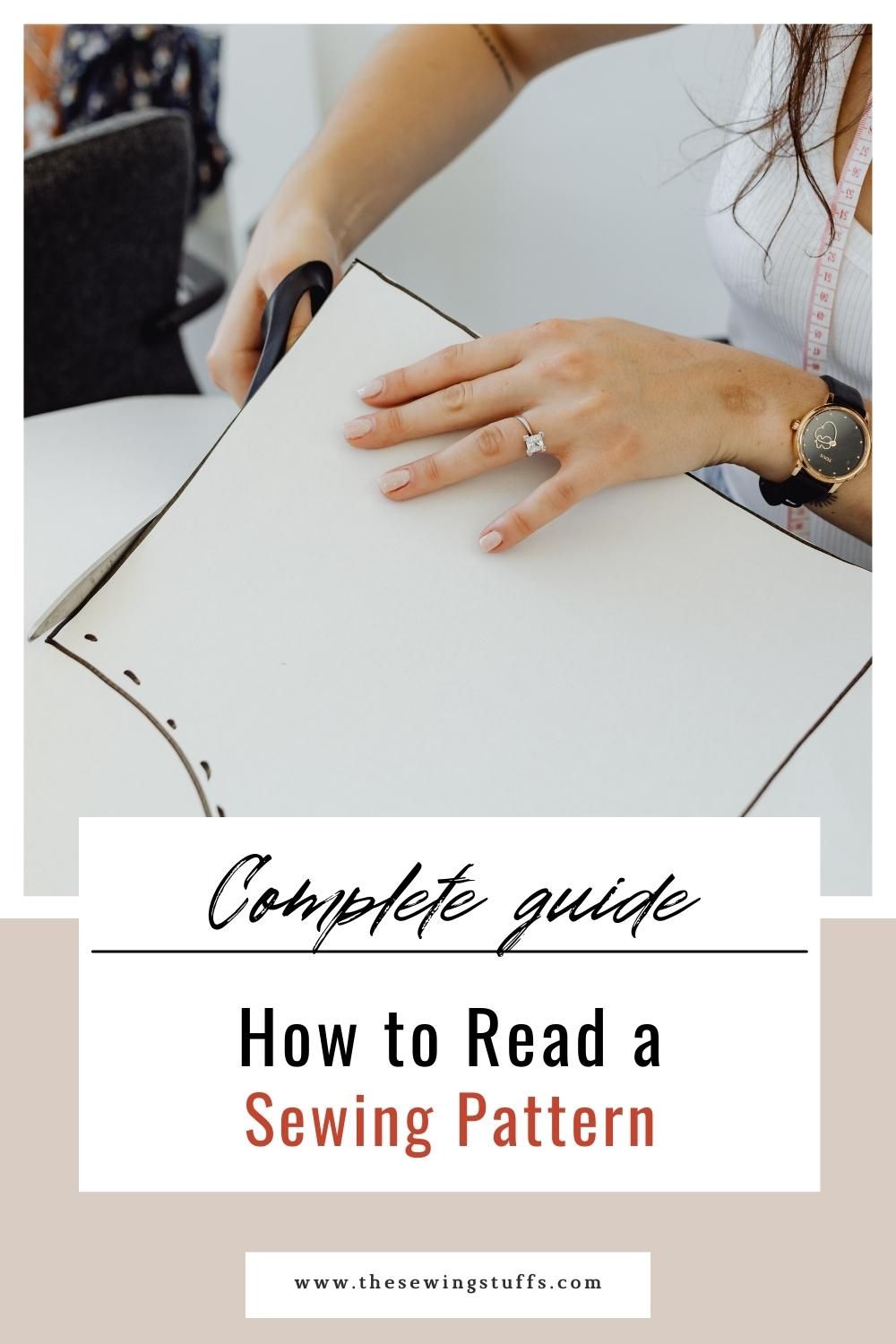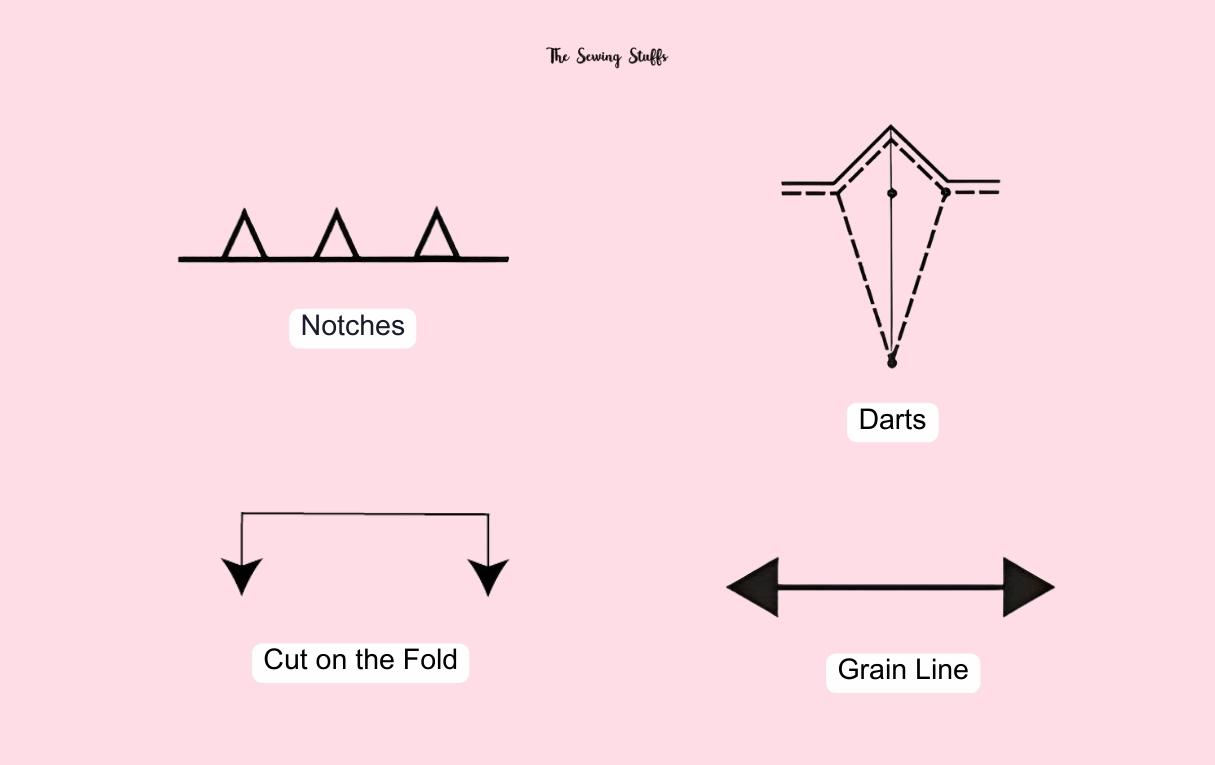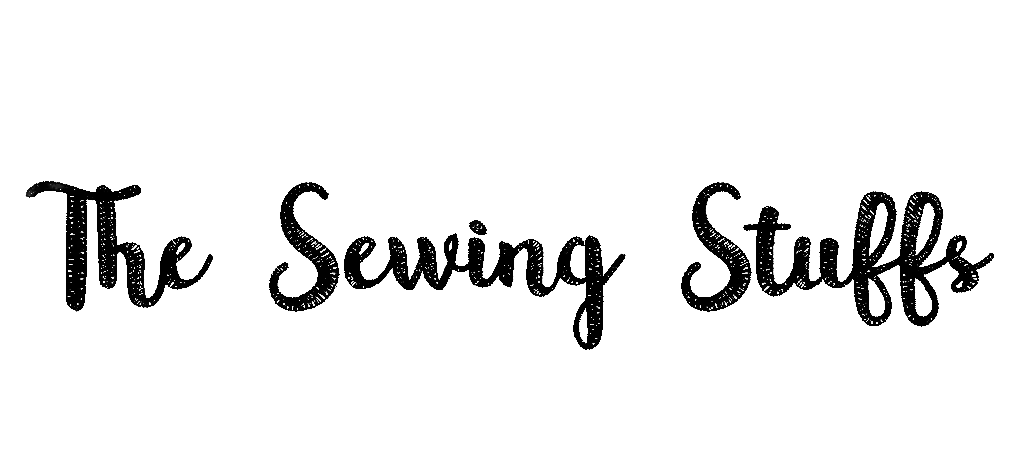Last Updated on September 9, 2023
How to Read a Sewing Pattern? Are you interested in creating your own stylish clothes but feel like you need help with a sewing pattern? If that’s you, then you’re in the right place.

Here, we’ll demystify the world of sewing patterns and help you understand how to use them effectively.
Highlights:
- Trace Patterns: Start by tracing the pattern to keep it reusable and versatile.
- Know Symbols: Understand key symbols like notches and darts for accurate sewing.
- Cut Fabric Right: Learn how to cut fabric while following instructions.
- Follow Instructions: Seamlessly follow step-by-step directions for sewing success.
How to read a sewing pattern for beginners?

To read a sewing pattern for beginners, first trace the pattern onto separate paper to preserve it, understand common symbols like notches and darts, and then follow the step-by-step instructions provided in the pattern.
By the end of this article, you’ll have the confidence to tackle your sewing projects easily.
Understanding Pattern Sizes
Sewing patterns come in various sizes to cater to different body shapes and dimensions. These sizes are represented by different lines and markings on the pattern. Instead of cutting directly into the pattern, limiting your options, tracing the pattern onto separate paper is more efficient. This way, you preserve the original pattern for future use and different sizes.
Tracing the Pattern
%202-54%20screenshot.jpg)
To trace the pattern, you’ll need some basic tools such as paper, a ruler, scissors, a marker, a highlighter, a tracing wheel (optional), and an awl (optional). Here’s how you do it:
- Select your size on the pattern and highlight the corresponding lines.
- Lay your pattern flat on top of the paper.
- Use the awl or pins to pierce through the pattern at significant points, like corners and notches.
- Use a tracing wheel or pierce holes along the curve for curved lines.
- Remove the pattern and connect the dots using a ruler and marker.
- Your traced pattern piece is now complete and ready to cut out.
Repeat this process for all the pattern pieces you need for your project.
Understanding Pattern Symbols

Sewing patterns are adorned with various symbols that might seem intimidating at first but are essential for successful sewing. Let’s decode some common symbols:
- Notches: Represented by small lines or triangles at the edges of pattern pieces, notches guide you in aligning your fabric pieces correctly.
- Darts: Larger triangles on the pattern indicate darts, crucial for adding shape and structure to your garment. Mark these on your fabric for precise sewing.
- Grain Line: This symbol, typically a large arrow, shows the fabric weave’s direction. It helps with draping and ensures patterns align correctly.
- Cut on the Fold: When you see this symbol, fold your fabric along the indicated line, place the pattern, and cut. This results in a symmetrical piece.
These symbols are your friends; they simplify the sewing process once you understand their meanings.
Cutting the Fabric
%208-13%20screenshot.jpg)
When it’s time to cut your fabric, there are a couple of methods. You can pin the pattern to the fabric and cut around it with fabric scissors or use a rotary cutter for efficiency, especially when cutting through two layers. Always pay attention to the grain line and any “cut on the fold” instructions to ensure your fabric pieces align correctly.
Sewing Your Project
Now that you have cut out your traced pattern pieces and fabric, it’s time to sew your garment. Most sewing patterns include step-by-step instructions that are easy to follow, especially for beginner-friendly patterns. Take your time, follow the instructions carefully, and keep sewing until you achieve the desired result.
Conclusion
Sewing patterns may seem daunting at first, but with practice and patience, you can master the art of creating your own clothing. Remember to trace your patterns to preserve them for future use, familiarize yourself with common symbols, and follow the step-by-step instructions provided with your patterns. Soon, you’ll proudly showcase your handmade garments, just like the palazzo pants in this guide. Happy sewing!

I Like to write and read on fashion, may be that’s why “Fashion says “me too” style says “only me”

